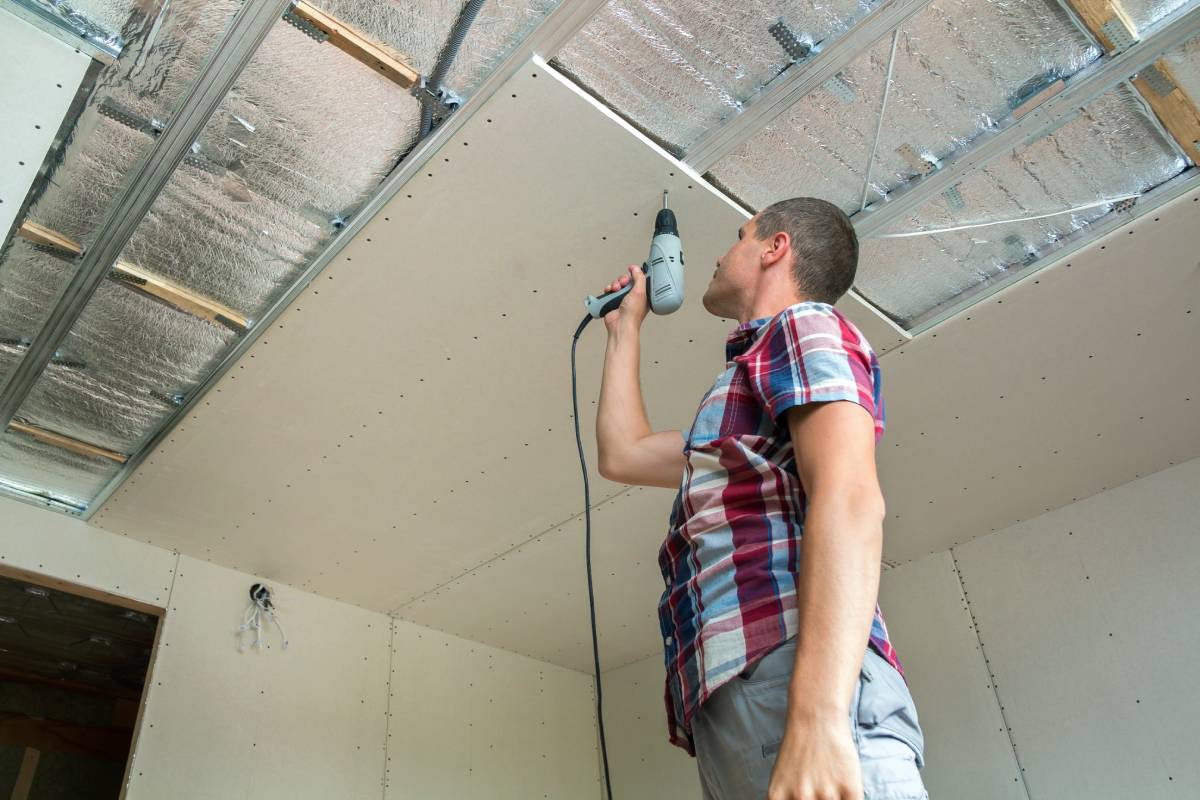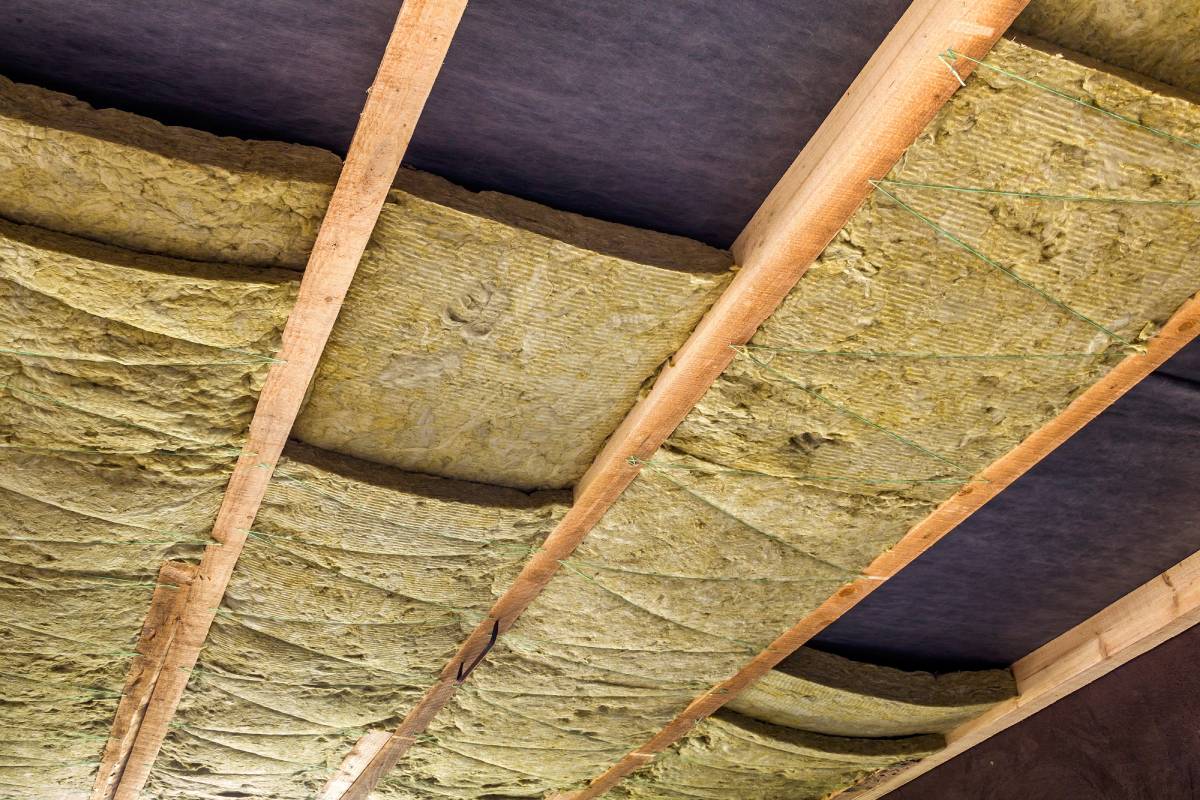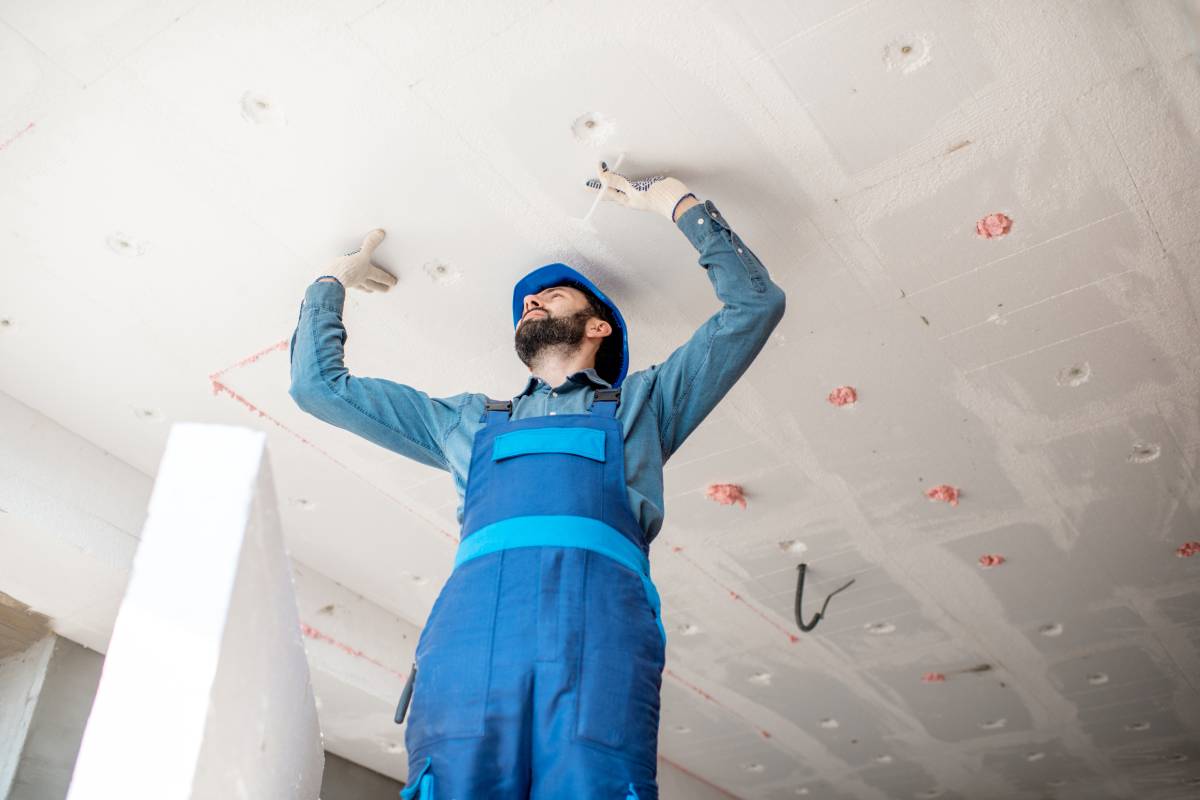
Does soundproofing ceiling really work? How much does soundproofing cost in Australia?
Can you soundproof an existing ceiling? Does soundproofing ceiling really work? How much does it cost? Click here for more
Are you tired of hearing footsteps from above, noisy neighbours, or street traffic invading your living space? If so, you’re not alone. Many people seek ways to soundproof their ceilings to create a quieter and more peaceful environment.
Fortunately, soundproofing a ceiling is not only possible but also achievable through various methods and materials. In this article, we’ll explore the effectiveness of soundproofing techniques, the associated costs, and how you can make your ceiling a haven of tranquillity.
You might also read:
- What is the purpose of a lift-top coffee table? Can you use a lift-top coffee table as a desk? What shape of a coffee table takes up less space?
- What is a Laminate Sheet Backsplash? The Advantages and Disadvantages of Laminate Sheet Backsplash
Can you soundproof an existing ceiling?
Soundproofing an existing ceiling can be an effective way to reduce noise from upstairs neighbours, street traffic, or other sources. While it may seem like a complex task, there are several methods you can employ to achieve a quieter living space without tearing down your ceiling. Let’s explore some easy-to-understand options:
 Add Mass: One effective way to soundproof a ceiling is by adding mass to it. You can achieve this by installing additional layers of drywall or mass-loaded vinyl (MLV) over the existing ceiling. These materials help to dampen sound vibrations, reducing the amount of noise that passes through.
Add Mass: One effective way to soundproof a ceiling is by adding mass to it. You can achieve this by installing additional layers of drywall or mass-loaded vinyl (MLV) over the existing ceiling. These materials help to dampen sound vibrations, reducing the amount of noise that passes through.- Use Acoustic Panels: Acoustic panels are another solution that can be easily installed on an existing ceiling. These panels are designed to absorb sound waves, preventing them from bouncing around the room and causing echoes. They come in various styles and sizes, allowing you to choose options that complement your existing décor.
- Install Insulation: Adding insulation between the ceiling joists can also help to reduce noise transmission. Fiberglass or mineral wool insulation is commonly used for this purpose. Insulation not only absorbs sound but also helps to regulate temperature, providing additional comfort benefits.
- Seal Gaps and Cracks: Even small gaps or cracks in the ceiling can allow sound to pass through. Sealing these openings with acoustic caulk or foam can significantly improve soundproofing. Pay close attention to areas around light fixtures, vents, and ceiling fans.
- Decoupling the Ceiling: Decoupling the ceiling from the floor above can further minimize sound transfer. This involves installing resilient channels or sound isolation clips between the existing ceiling and the joists. These products help to break the direct path of sound vibrations, reducing their impact on the room below.
- Use Carpet or Rugs: If the noise is coming from footsteps or other impact sounds, adding carpet or rugs to the floor above can help absorb some of the impacts and reduce noise transmission through the ceiling.
- Strategic Furniture Placement: Placing heavy furniture or bookshelves against the walls can also help to absorb sound and prevent it from travelling through the ceiling. This method is particularly useful in rooms where traditional soundproofing materials may not be practical.
- Consider a Drop Ceiling: Installing a drop ceiling with acoustic tiles is another option for soundproofing an existing ceiling. These tiles are designed to absorb sound and can be easily installed below the existing ceiling surface.
When soundproofing an existing ceiling, it’s essential to consider the specific sources of noise and choose the most appropriate solutions based on your budget and living situation. While some methods may require professional installation, many options can be implemented as DIY projects with the right materials and tools. By taking steps to soundproof your ceiling, you can create a more peaceful and enjoyable living environment.

Does soundproofing ceiling really work?
Soundproofing your ceiling can significantly lower noise in your living area, although its effectiveness hinges on several factors. To grasp if ceiling soundproofing is truly effective, it’s crucial to consider these aspects.
Understanding the mechanics of soundproofing is key before assessing its effectiveness. The goal of soundproofing is to curb the spread of sound waves from one area to another, which is achieved by dampening the vibrations that pass through walls, floors, and ceilings.
Factors to Consider
- Type of Noise: The effectiveness of soundproofing depends on the type of noise you’re dealing with. Airborne noise, such as voices or music, requires different techniques than impact noise, like footsteps or banging.
- Materials and Methods: The choice of materials and methods used for soundproofing greatly impacts its effectiveness. Different materials absorb, block, or dampen sound waves in various ways.
- Budget and Resources: The extent to which you can soundproof your ceiling may be limited by your budget and resources. Some methods are more affordable and DIY-friendly, while others may require professional installation and investment.
- Room Size and Layout: The size and layout of the room also play a role. Larger rooms may require more extensive soundproofing, while the presence of obstructions like beams or ductwork can affect the effectiveness of soundproofing materials.
Soundproofing your home offers numerous benefits that can improve your living environment and enhance your lifestyle.
Firstly, soundproofing helps create a peaceful atmosphere by reducing outside noise infiltration. This means you can enjoy a quieter, more serene living space, free from the distractions of street traffic, neighbours, or other external disturbances.
Secondly, soundproofing provides increased privacy for you and your family by minimizing the sound heard by neighbours. This ensures that conversations, music, or other activities within your home remain private and undisturbed.
Additionally, soundproofing serves as an effective heat insulator, helping to regulate indoor temperatures and reduce energy costs, especially during colder months. By retaining heat, soundproofing contributes to a more comfortable and energy-efficient home environment.
Moreover, soundproofing opens up possibilities for creating dedicated spaces within your home, such as a recording studio or entertainment centre. These specialized areas allow you to pursue hobbies, enjoy entertainment, or work on projects without external noise interference.
Furthermore, soundproofing can enhance your ability to focus on important tasks, whether it’s work-related projects, hobbies, or relaxation. By minimizing distractions, soundproofing creates an environment conducive to concentration and productivity.

How much does it cost to soundproof a ceiling?
The cost of installing a soundproof ceiling depends on several key factors, including the size of the ceiling, the type of home, the materials used, and the soundproofing method employed. Budget-friendly materials can start at around $50, while premium options like acoustic panels can range from $1,000 to $5,000. While DIY projects with cheaper materials are an option, they may not be as effective in blocking out louder noises.
For example, in a typical 2-bedroom apartment, you can expect to pay approximately $300 plus GST per square meter for soundproofing the ceiling. This cost covers both labour and materials, including resilient clips, metal frames, acoustic insulation, and two layers of 16mm sound-rated plasterboard.
However, the total cost can vary based on factors such as the soundproofing system used, the property’s design, and the desired finish. Additional costs may apply if the existing ceiling needs to be removed, and material loading costs can vary depending on location and access ease. Costs may also differ if you’re soundproofing just a few rooms rather than the entire unit.
A high-quality soundproof ceiling installation should make most common noises, such as footsteps, talking, and water drainage, barely audible. However, no system is perfect, and some sound may still pass through the acoustic barrier. Additionally, noise can still travel through the walls, so you may need to consider soundproofing for the walls as well, especially if you’re concerned about noise from neighbouring properties.
Factors that affect the cost of soundproofing include:
- Soundproofing Material: The material chosen for soundproofing can greatly influence the cost. Options range from textured paint to acoustic insulation slabs, with prices varying depending on the brand and noise reduction level desired.
- Area to Soundproof: The size and shape of the area being soundproofed affect costs. Walls are typically cheaper to soundproof compared to ceilings, with materials starting at $25 for walls and $50 for ceilings. Irregularly shaped rooms may incur higher fees due to the complexity of installation.
- Soundproofing Technique: Different techniques, such as building a second wall or adding soundproof materials to existing walls, can impact the overall cost.
- Labour: Installation costs, which can range from $60 to $300 depending on complexity, are a significant factor in soundproofing expenses.
To ensure the success of your soundproofing project, follow these key tips:
- Clearly define the purpose of soundproofing. Determine whether it’s primarily for reducing outside noise or for creating specific entertainment or workspaces within your home.
- Research the different types and methods of soundproofing available. Understand the options and choose the most suitable ones for your needs and budget.
- Consult with an expert tradesperson or soundproofing specialist to explore the best solutions for your home. They can provide valuable advice and recommendations based on your requirements.
- Obtain multiple quotes from different tradespeople or labourers and select one with the right skills, experience, and background to execute the project effectively.
- Follow aftercare guidelines for your newly soundproofed home to ensure its longevity and effectiveness. This includes regular maintenance and addressing any issues promptly to avoid costly repairs.